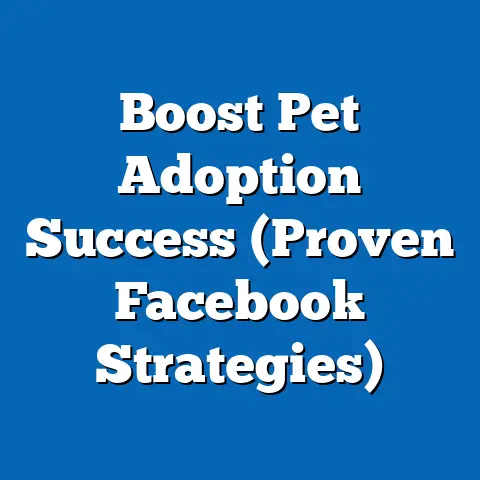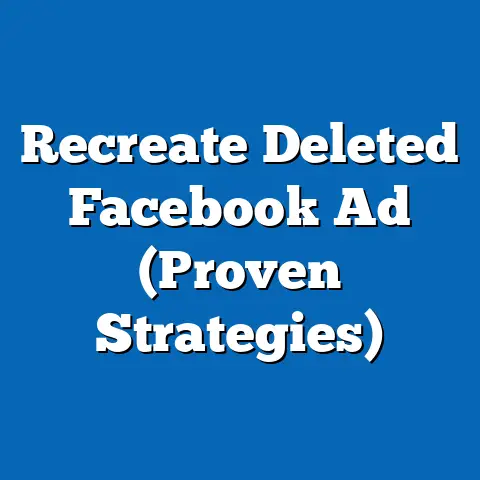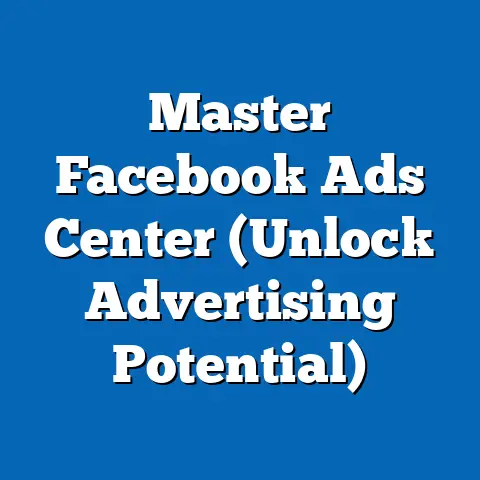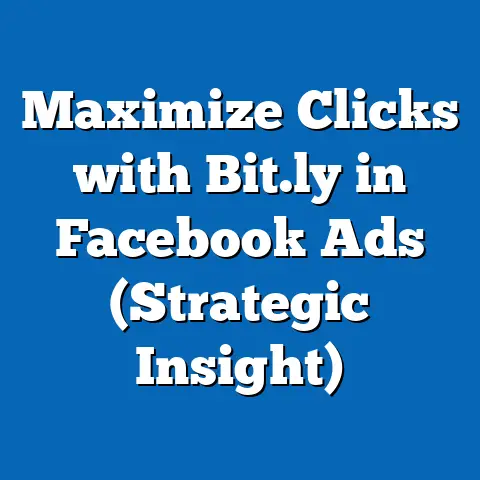Unlock Free Facebook Ads with Interest Targeting (Smart Strategy)
I’ve always viewed Facebook advertising as a vast, potentially overwhelming landscape. It can feel like you’re standing before a locked treasure chest, overflowing with opportunities to connect with customers, build brand awareness, and drive sales. But just like any treasure chest, it needs a key. In the world of Facebook Ads, that key is understanding and mastering interest targeting.
Imagine a skilled locksmith, meticulously crafting a key to fit a complex lock. They understand the subtle nuances of tumblers and pins, knowing exactly how to manipulate them to unlock the treasure within. Similarly, as marketers, we need to become skilled “interest locksmiths,” understanding the intricacies of our audience’s passions, hobbies, and affinities to unlock the full potential of Facebook advertising.
I. Understanding Facebook Ads
Before we dive headfirst into the specifics of interest targeting, let’s establish a solid foundation by understanding the landscape of Facebook advertising.
1. Overview of Facebook Advertising
Facebook Ads, at its core, is a paid advertising platform offered by Meta (formerly Facebook). It allows businesses of all sizes to reach a massive audience – billions of active users – with targeted messaging. Think of it as a digital billboard, but instead of being placed on a highway, it’s placed directly in the newsfeeds of people who are most likely to be interested in your product or service.
The purpose of Facebook Ads is multifaceted. It can be used to:
- Increase Brand Awareness: Get your brand in front of a wider audience and build recognition.
- Drive Website Traffic: Send potential customers to your website to learn more about your offerings.
- Generate Leads: Collect contact information from interested individuals to nurture into sales.
- Increase Sales: Directly promote products or services and drive online or offline conversions.
- Boost Engagement: Encourage users to interact with your content, like your page, or join your community.
And the platform is undeniably effective. Consider these statistics:
- Facebook boasts nearly 3 billion monthly active users, making it a massive pool of potential customers.
- Studies have shown that Facebook Ads have a higher conversion rate than other social media platforms.
- Businesses report significant ROI from Facebook Ads, particularly when targeting is done effectively.
Facebook Ads also offers a diverse range of ad formats to suit different marketing objectives, including:
- Image Ads: Simple yet effective ads featuring a single image and compelling copy.
- Video Ads: Engaging ads that use video to capture attention and tell a story.
- Carousel Ads: Ads that allow you to showcase multiple images or videos in a scrolling format.
- Collection Ads: Ads designed for e-commerce, allowing users to browse and purchase products directly from the ad.
- Lead Ads: Ads that make it easy for users to submit their contact information directly within the Facebook platform.
- Instant Experience Ads: Full-screen, mobile-optimized ads that provide an immersive experience.
2. The Importance of Targeting
While the sheer size of Facebook’s user base is appealing, simply throwing your ad out to everyone is a surefire way to waste your advertising budget. That’s where targeting comes in.
Targeting in digital marketing refers to the process of identifying and segmenting your audience based on specific characteristics. This allows you to deliver your ads to the people who are most likely to be interested in your product or service, leading to higher engagement, better conversion rates, and a more efficient use of your advertising budget.
Facebook’s algorithm plays a crucial role in this process. It analyzes vast amounts of data about its users, including their demographics, interests, behaviors, and connections. This data is then used to match ads with the users who are most likely to respond positively.
Facebook offers a variety of targeting options, including:
- Demographic Targeting: Targeting based on age, gender, location, education, and other demographic factors.
- Behavioral Targeting: Targeting based on users’ online behavior, such as their purchase history, website visits, and app usage.
- Custom Audiences: Targeting based on your own customer data, such as email lists or website visitors.
- Lookalike Audiences: Targeting based on users who are similar to your existing customers.
- Interest Targeting: Targeting based on users’ declared interests, hobbies, and passions.
Interest targeting is particularly powerful because it allows you to connect with people based on their passions. You’re not just targeting someone because they’re a certain age or live in a certain location; you’re targeting them because they’ve actively expressed an interest in something that’s relevant to your business.
Takeaway: Understanding the fundamentals of Facebook Ads and the importance of targeting is crucial for creating effective and efficient advertising campaigns. Interest targeting is a powerful tool that can help you connect with your ideal audience based on their passions and hobbies.
II. The Concept of Interest Targeting
Now, let’s dive deeper into the heart of this guide: interest targeting.
1. What is Interest Targeting?
Interest targeting is a Facebook Ads feature that allows you to target users based on their stated interests, hobbies, and the pages they’ve liked on Facebook. It’s like having a direct line to people who are already predisposed to be interested in what you have to offer.
Unlike demographic targeting, which focuses on who someone is, interest targeting focuses on what someone likes. This subtle difference can have a significant impact on the effectiveness of your ads.
For example, instead of targeting “women aged 25-34,” you could target “women aged 25-34 who are interested in yoga, healthy eating, and meditation.” This more specific targeting allows you to craft ads that resonate deeply with your audience, leading to higher engagement and conversion rates.
Facebook’s interest categories are vast and diverse, covering everything from hobbies like photography and gardening to activities like travel and cooking, and even specific brands and pages that users have liked. This allows for incredibly granular targeting, ensuring that your ads are seen by the people who are most likely to be interested.
Here are just a few examples of interest categories available on Facebook:
- Hobbies: Hiking, painting, reading, gaming
- Activities: Traveling, cooking, dancing, volunteering
- Pages Liked: Specific brands, celebrities, organizations, or media outlets
2. Benefits of Interest Targeting
Interest targeting offers a multitude of benefits for Facebook advertisers:
- Increased Ad Relevance and Engagement: By targeting users based on their interests, you can create ads that are highly relevant to their needs and desires. This leads to higher engagement rates, such as likes, comments, shares, and clicks.
- Enhanced Opportunities for Brand Awareness and Customer Connection: When your ads resonate with your audience’s interests, you’re not just selling a product or service; you’re building a connection. This can lead to increased brand awareness and customer loyalty.
- Cost-Effectiveness of Targeting Specific Interests Versus Broader Audiences: By focusing your advertising efforts on a specific audience with shared interests, you can avoid wasting your budget on people who are unlikely to be interested in your offerings. This can significantly improve your ROI.
I’ve seen firsthand the power of interest targeting in my own campaigns. For instance, I was working with a local bookstore that wanted to promote a new series of mystery novels. Instead of simply targeting people who lived in the area, we targeted people who were interested in “mystery novels,” “thrillers,” and “crime fiction.” The result was a significant increase in website traffic and book sales, all while staying within a tight advertising budget.
Takeaway: Interest targeting is a powerful tool that allows you to connect with your ideal audience based on their passions and hobbies. This can lead to increased ad relevance, engagement, brand awareness, and cost-effectiveness.
III. Unlocking the Treasure: Setting Up Interest Targeting
Now that we understand the power of interest targeting, let’s get practical and explore how to set it up within Facebook Ads Manager.
1. Creating Your Facebook Ads Account
Before you can start targeting interests, you’ll need a Facebook Ads Manager account. Here’s a step-by-step guide:
- Go to Facebook Ads Manager: Navigate to https://www.facebook.com/adsmanager.
- Log in with Your Facebook Account: Use your personal Facebook account to log in. Don’t worry, your personal information won’t be shared with your ad campaigns.
- Create a New Ad Account: If you don’t already have an ad account, you’ll be prompted to create one. Follow the on-screen instructions to set up your account, including selecting your country, currency, and time zone.
- Link a Facebook Business Page: For credibility and to access certain ad features, it’s essential to link your Facebook Business Page to your ad account. If you don’t have a Business Page, you can create one for free.
2. Identifying Your Audience’s Interests
This is where the “locksmith” work begins. Identifying your audience’s interests requires research, analysis, and a deep understanding of your target customer. Here are some techniques you can use:
- Brainstorming: Start by brainstorming a list of potential interests that your target audience might have. Think about their hobbies, passions, favorite brands, and the types of content they consume.
- Customer Surveys: Ask your existing customers about their interests. This can provide valuable insights into what your target audience cares about.
- Social Media Listening: Monitor social media conversations to see what your target audience is talking about. This can reveal emerging trends and interests.
- Facebook Audience Insights: This is a powerful tool within Facebook Ads Manager that allows you to analyze the demographics, interests, and behaviors of your target audience. You can use it to identify potential interests that you might not have considered.
- Customer Persona Development: Create detailed profiles of your ideal customers, including their demographics, interests, behaviors, and motivations. This can help you to better understand their needs and desires, and identify relevant interests for targeting.
Combining customer persona development with interest targeting can be incredibly effective. For example, if you’re selling organic skincare products, your customer persona might be a woman aged 25-45 who is interested in “organic skincare,” “natural beauty,” “sustainable living,” and “yoga.” You can then use these interests to target your ads to the right audience.
3. Crafting Your Ad Campaign
Once you’ve identified your audience’s interests, it’s time to create your ad campaign. Here’s a step-by-step guide:
- Create a New Campaign: In Ads Manager, click the “Create” button to start a new campaign.
- Choose Your Campaign Objective: Select the objective that aligns with your marketing goals. For example, if you want to drive website traffic, choose the “Traffic” objective.
- Define Your Audience: In the “Audience” section, you can define your target audience based on demographics, interests, behaviors, and other factors. This is where you’ll use your research to select the relevant interests for your target audience.
- Choose Your Ad Placements: Select where you want your ads to appear. You can choose automatic placements, which allows Facebook to optimize your placements for you, or you can manually select the placements that you want to use.
- Set Your Budget and Schedule: Determine how much you want to spend on your campaign and when you want your ads to run.
- Create Your Ad: Choose the ad format that aligns with your audience’s interests and craft compelling ad copy that resonates with them. Use eye-catching visuals that complement your message.
- Review and Publish: Review your campaign settings and ad creative, and then publish your campaign.
When crafting your ad campaign, keep these tips in mind:
- Choose the Right Ad Format: Select an ad format that aligns with your audience’s interests. For example, if you’re targeting people who are interested in travel, a video ad showcasing stunning destinations might be a good choice.
- Write Compelling Ad Copy: Your ad copy should be clear, concise, and relevant to your audience’s interests. Highlight the benefits of your product or service and use a strong call to action.
- Design Eye-Catching Visuals: Your visuals should be high-quality and visually appealing. Use images or videos that capture attention and convey your message effectively.
Takeaway: Setting up interest targeting in Facebook Ads Manager involves creating an ad account, identifying your audience’s interests, and crafting an ad campaign that resonates with them. By following these steps, you can unlock the treasure of targeted advertising and achieve your marketing goals.
IV. Advanced Strategies for Maximizing Interest Targeting
Now that you’ve mastered the basics of interest targeting, let’s explore some advanced strategies that can help you take your campaigns to the next level.
1. Combining Interests for Better Targeting
One of the most effective ways to refine your audience targeting is to combine multiple interests. This allows you to create a more specific and targeted audience, leading to higher engagement and conversion rates.
For example, instead of simply targeting people who are interested in “yoga,” you could target people who are interested in “yoga” and “healthy eating” and “meditation.” This creates a more niche audience of people who are passionate about wellness and are more likely to be interested in your product or service.
Here are some examples of successful layered targeting strategies:
- Fitness Apparel: Target people who are interested in “running” and “fitness” and “outdoor recreation.”
- Organic Food Delivery: Target people who are interested in “organic food” and “healthy eating” and “meal planning.”
- Travel Agency: Target people who are interested in “travel” and “adventure” and “luxury hotels.”
When layering interests, it’s important to strike a balance between specificity and reach. If you layer too many interests, you might end up with an audience that’s too small to be effective. Conversely, if you don’t layer enough interests, your audience might be too broad and your ads might not resonate with them.
2. Utilizing Lookalike Audiences
Lookalike Audiences are a powerful Facebook Ads feature that allows you to target users who are similar to your existing customers. This can be a highly effective way to expand your reach and find new customers who are likely to be interested in your product or service.
To create a Lookalike Audience, you’ll need to provide Facebook with a source audience, such as your email list, website visitors, or Facebook Page fans. Facebook will then analyze the characteristics of your source audience and create a new audience of users who share similar traits.
The synergy between interest targeting and Lookalike Audiences is significant. You can use interest targeting to refine your Lookalike Audience and ensure that you’re targeting the right people. For example, you could create a Lookalike Audience based on your existing customers and then layer in interests that are relevant to your product or service.
3. A/B Testing for Optimization
A/B testing, also known as split testing, is the process of comparing two versions of an ad to see which one performs better. This is an essential part of refining your interest-targeted ads and ensuring that you’re getting the most out of your advertising budget.
You can A/B test various elements of your ads, including:
- Ad Copy: Test different headlines, body text, and calls to action.
- Visuals: Test different images and videos.
- Targeting: Test different interests and audience segments.
- Placements: Test different ad placements.
When A/B testing, it’s important to only test one element at a time. This will allow you to isolate the impact of each element and determine which one is driving the best results.
Key metrics to monitor for success and adjustments based on data include:
- Click-Through Rate (CTR): The percentage of people who see your ad and click on it.
- Conversion Rate: The percentage of people who click on your ad and take a desired action, such as making a purchase or filling out a form.
- Cost Per Click (CPC): The amount you pay each time someone clicks on your ad.
- Cost Per Conversion (CPC): The amount you pay for each conversion.
- Return on Ad Spend (ROAS): The amount of revenue you generate for every dollar you spend on advertising.
By monitoring these metrics and making adjustments based on data, you can continuously optimize your interest-targeted ads and improve your ROI.
Takeaway: Advanced strategies for maximizing interest targeting include combining interests for better targeting, utilizing Lookalike Audiences, and A/B testing for optimization. By implementing these strategies, you can take your Facebook Ad campaigns to the next level and achieve even greater success.
V. Real-World Case Studies
To further illustrate the power of interest targeting, let’s examine some real-world case studies of successful and less successful Facebook ad campaigns.
1. Successful Campaigns Using Interest Targeting
Case Study 1: A Local Coffee Shop
A local coffee shop wanted to increase its customer base and promote its new seasonal drinks. They decided to run a Facebook ad campaign targeting people who lived within a 5-mile radius of the shop and were interested in “coffee,” “tea,” and “local businesses.”
The ad featured a mouthwatering photo of their new pumpkin spice latte and highlighted the fact that they used locally sourced ingredients. The ad copy was warm and inviting, and the call to action was “Stop by and try our new seasonal drinks!”
The results were impressive. The coffee shop saw a significant increase in foot traffic and sales of their seasonal drinks. They also gained a number of new Facebook followers and email subscribers.
Breakdown of Strategies Employed:
- Hyperlocal Targeting: Targeting people who lived within a specific radius of the shop.
- Interest Targeting: Targeting people who were interested in coffee, tea, and local businesses.
- Compelling Visuals: Using a mouthwatering photo of their product.
- Warm and Inviting Ad Copy: Making the ad copy relatable and engaging.
- Clear Call to Action: Telling people exactly what they wanted them to do.
Case Study 2: An Online Yoga Studio
An online yoga studio wanted to attract new students and promote its online classes. They ran a Facebook ad campaign targeting people who were interested in “yoga,” “meditation,” “mindfulness,” and “wellness.”
The ad featured a short video of one of their instructors leading a yoga class. The ad copy highlighted the benefits of yoga, such as stress reduction, improved flexibility, and increased energy. The call to action was “Sign up for a free trial!”
The yoga studio saw a significant increase in sign-ups for their online classes. They also gained a number of new Facebook followers and email subscribers.
Breakdown of Strategies Employed:
- Interest Targeting: Targeting people who were interested in yoga, meditation, mindfulness, and wellness.
- Engaging Video: Using a short video to showcase their classes.
- Benefit-Driven Ad Copy: Highlighting the benefits of yoga.
- Clear Call to Action: Encouraging people to sign up for a free trial.
2. Lessons Learned from Less Successful Campaigns
Campaign 1: A Clothing Retailer with Broad Targeting
A clothing retailer ran a Facebook ad campaign to promote its new line of summer dresses. However, they used very broad targeting, targeting people who were simply interested in “fashion.”
The ad featured a generic photo of a model wearing one of their dresses. The ad copy was bland and uninspired, and the call to action was “Shop now!”
The campaign performed poorly. The retailer saw very little website traffic and few sales.
Insights Gained:
- Broad Targeting is Ineffective: Targeting too broad of an audience can lead to wasted advertising budget.
- Generic Ads Don’t Resonate: Generic ads that don’t speak to the specific needs and desires of the target audience are unlikely to perform well.
- Weak Call to Action: A weak call to action can prevent people from taking the desired action.
Campaign 2: A Tech Startup with Irrelevant Interests
A tech startup ran a Facebook ad campaign to promote its new software product. However, they targeted people who were interested in “technology,” “startups,” and “business.”
While these interests might seem relevant, they were too broad. The startup ended up targeting a lot of people who were interested in technology in general, but not necessarily in their specific type of software.
The campaign performed poorly. The startup saw very little website traffic and few sign-ups for their software.
Insights Gained:
- Relevance is Key: It’s important to target interests that are directly relevant to your product or service.
- Don’t Assume Interests: Don’t assume that certain interests are relevant to your target audience. Do your research and test different interests to see what works best.
- Specificity Matters: The more specific your targeting, the better your results will be.
Takeaway: Analyzing both successful and less successful campaigns can provide valuable insights into what works and what doesn’t. By learning from these examples, you can avoid common pitfalls and create more effective interest-targeted Facebook ads.
VI. Conclusion: The Key to Your Marketing Success
By understanding the fundamentals of Facebook Ads, mastering the art of interest targeting, and implementing advanced strategies for optimization, you can create highly effective and cost-efficient advertising campaigns that drive results.
Remember, the treasure of increased sales, brand loyalty, and customer engagement is waiting to be unlocked. With the right strategies in place, you can reach your desired audience effectively and efficiently, ultimately achieving your marketing goals.
Call to Action:
I encourage you to start implementing interest targeting in your Facebook ad campaigns today. Experiment with the strategies discussed in this article, track your results, and make adjustments as needed. Don’t be afraid to try new things and push the boundaries of what’s possible.
The treasure is waiting to be unlocked. Are you ready to turn the key?





